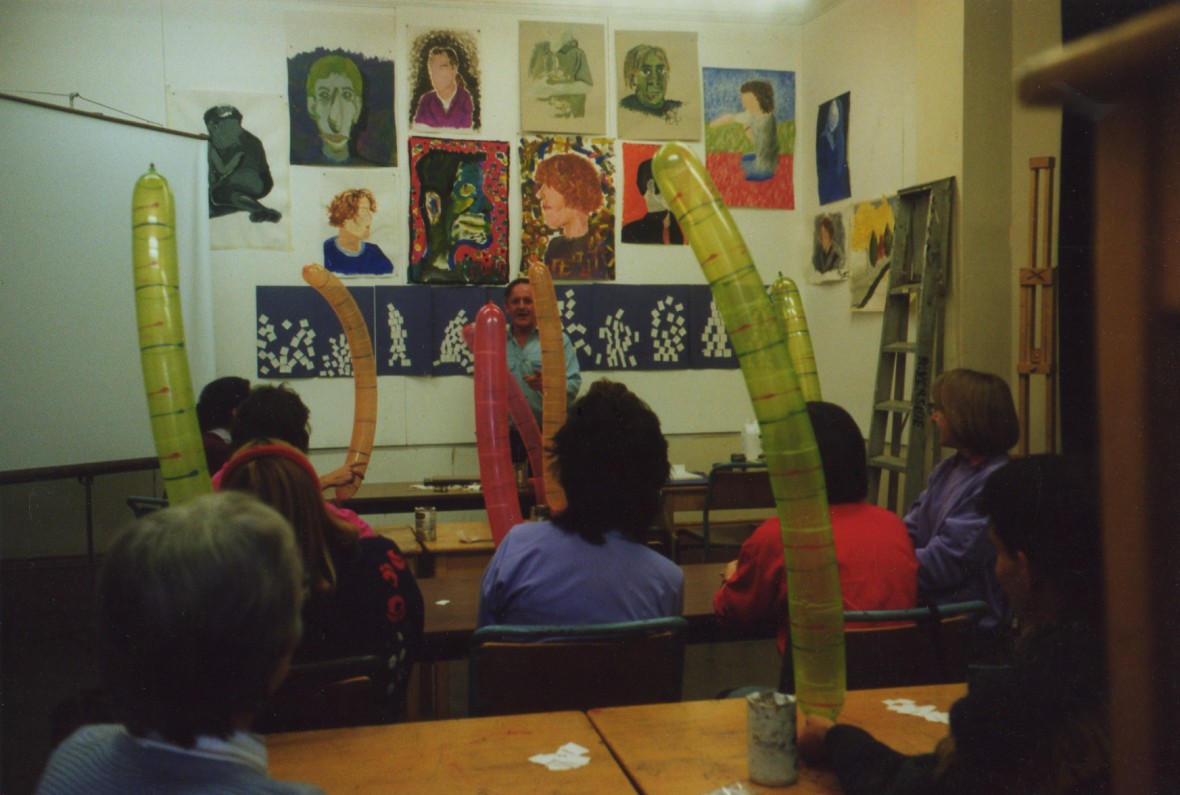A brief encounter with John’s paintings shows many apparently different images, from points of departure. These subjects, as diverse and partial (in some instances) as they are “become the same thing in a perceived visual sense if not in a psychological sense” images are perceived to merge rather than remain separate. Of ‘Figure Landscape’ painting John writes; ‘the perceived image of a landscape is a figure. Is a figure landscape, or a landscape figure?’
In the exhibition ‘Permutations’ 1994, John chose the title to fit and describe his work. Quoting the dictionary definition of permutations as meaning ‘the action of changing the order of things, to interchange’ John writes of his working practise; ‘the subject stimulus becomes the vehicle through which to organise the form via or through visual language – colour, tone, texture, spatial relationships, so there is the change from one thing to another.’
Of ‘The Watchers’ painting he writes; ‘a work in which the ordering of visual language matters stimulated by window reflections in shopping centers, the faceting of images, the zombie-like mannequins which reflect much of what I feel about society.’
In relation to ‘The Visitors’ painting; ‘many apparitions appear (based on my concept of mannequins) they visit Llandudno pier, which is often deserted. This is a work that has visual language structure.’
Identification of these associations in perception (reinforcement relationships) becomes John’s rationale for the combination of apparently unrelated images. “They present me with a problematic dichotomy parallel to the incongruities of living life itself”.
The criteria John identified as central are based on evaluations of the juxtapositions of visual language, evaluations made at all stages of the working process. Although the paintings have specific environmental starting points, it is this critical synthesis of the total experience of perceived relationships that John considered to be the real subject of his paintings.

